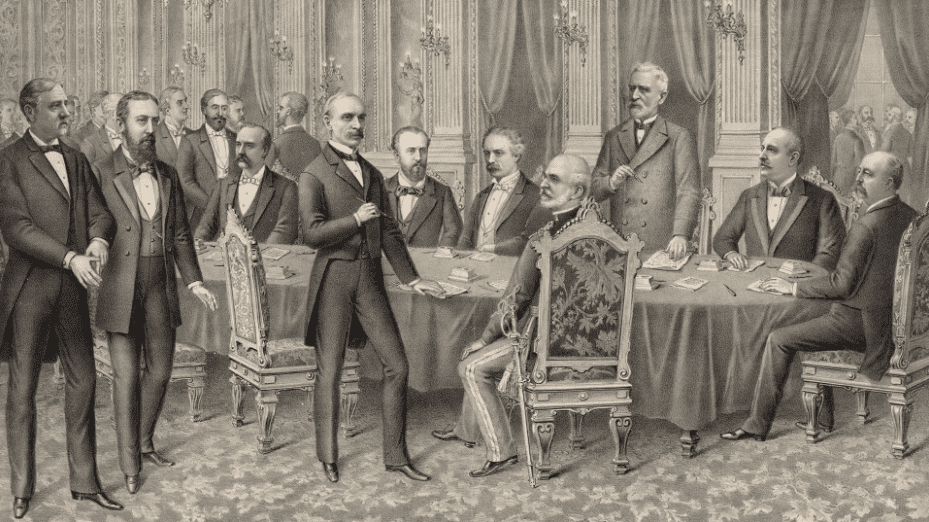When I sat down to write this post, I wanted to discuss US history’s biggest real estate deals—deals like Sears Tower, which sold for $1.3 Billion, the GM Building in NY, which sold for $2.8 Billion, or Clint Eastwood and Arnold Palmer’s purchase of Pebble Beach, which cost $820MM. Well, how about a deal for 827,000 square miles for $15 Million? Who were the brokers who made these deals? I’ve played Pebble, so I did my part!
The Association of Commercial Real Estate in Sacramento hosts The Broker of the Year Awards (BOYA) annually. Brokers are nominated in every asset class (Office, Industrial, Land, Investment, etc.). In 2023 Industrial was the preferred asset class.
If there were an awards ceremony for the end of the 1800s, the primary asset class would be Land—and lots of it. The winners would include Thomas Jefferson, John Adams, Ben Franklin, and James Munroe. The growth of the United States occurred through land acquisitions, which fundamentally shaped the nation’s landscape. Without these tenacious and opportunistic brokers representing the United States, the US would not be what it is – and – I would not have written this post; I would probably be on a farm in the Netherlands, tending to a herd of Dutch Belted Cows.
The United States’ evolution began in 1783 with the Treaty of Paris, formally ending the Revolutionary War. Great Britain granted the United States land east of the Mississippi River, including key islands like Manhattan and Staten Island. This was just the first step. Subsequent deals like the Louisiana Purchase in 1803 doubled the nation’s size, and the Treaty of Guadalupe Hidalgo in 1848 secured massive territories following the Mexican-American War. Smaller purchases like the Gadsden Purchase in 1854 and the Virgin Islands Purchase in 1917 further refined the national borders. The Alaska Purchase of 1867, nicknamed the “Seward’s Folly,” added a vast and resource-rich northern frontier. These land transactions spread over a century, laid the groundwork for the continental United States we know today.
The nominations for the most incredible deals (steals) in The United States are:
1670: The Purchases of Manhattan and Staten Island
Property: Manhattan and Staten Island for a total of 84 square miles
Buyers: Peter Minuit of the Dutch West India Company and Governor Francis Lovelace of the New York colony
Sellers: the Lenni-Lenape Sachems of Staten Island
One of the first commercial real estate deals for United States territory occurred before the United States was the USA. The deal started in 1626 when Peter Minuit of the Dutch West India Company allegedly exchanged some beads and assorted trinkets for the entire Island of Manhattan with the Native Americans. Whether the deal leans more toward historical accuracy or folklore has been debated over the years. What might have been included in the agreement beyond the value of beads? Did the Native Americans look at property rights and ownership like the Dutch West India Company?
While the deed for the purchase of Manhattan has been lost to history, the deed for Staten Island remains. At the end of the Second Anglo-Dutch War in 1667, the Dutch ceded their New Netherland territory to England in the Treaty of Breda, making Staten Island part of the new English colony of New York. So, Technically, the United States did not own Manhattan and Staten Island. The United States had to wait until the end of the American Revolutionary War to claim its prize. I guess you could say that the British were saving the property for the US.
In 1670, the New York colonial government purchased Staten Island from the Lenni-Lenape people who lived there. The contract between Governor Francis Lovelace of New York and the Lenni-Lenape sachems of Staten Island included additional details beyond the actual sale of the land. The agreement required the Lenni-Lenape people to agree never to attack the English settlers of Staten Island. Also, six Lenni-Lenape youth signed the deal as a guarantee that future generations would honor it.
1783: The Treaty of Paris – 830,000 square miles
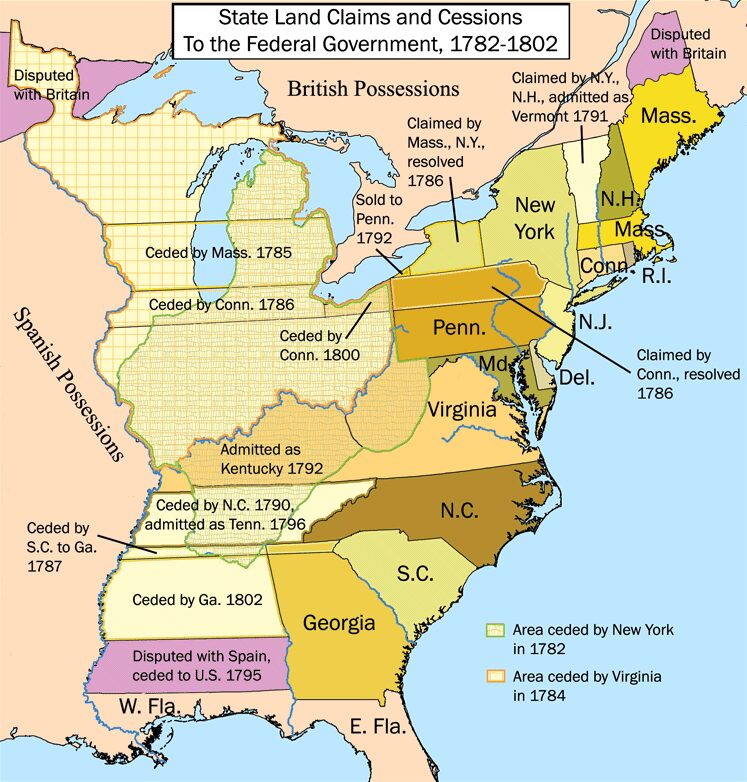
Property: New Hampshire, Massachusetts, Rhode Island, Connecticut, New York, New Jersey, Pennsylvania, Delaware, Maryland, Virginia, North Carolina, South Carolina, Georgia, Ohio, Michigan, Indiana, Illinois, Wisconsin, and parts of Minnesota for a total of 830,000 square miles
Purchase Price: Cost of Revolutionary War – $101 million (estimated)
Buyers: John Adams, Benjamin Franklin, and John Jay–– United States
Sellers: David Hartley as a representative of King George III––Great Britain
Before the United States could pursue nation-building real estate, it had to become the United States. July 4, 1776, we declared our independence from Great Britain, but the transfer of land ownership didn’t happen until years later. Following George Washington’s and the Continental Army’s victory in the Revolutionary War, John Adams, Benjamin Franklin, and John Jay traveled to Paris to begin peace negotiations with Great Britain.
The Treaty of Paris, signed on September 3, 1783, by the three U.S. representatives and David Hartley, who represented King George III, ended the American Revolution, marking Great Britain’s recognition of the American colonies as a sovereign nation. The final terms were favorable to the United States, thanks to Prime Minister Lord Shelburne’s view of American independence as an opportunity for a lucrative trade alliance that removed the costs of running the colonies.
Of course, this isn’t a straightforward real estate deal with a set purchase price. It is hard to put a price on freedom, but if we only look at the financial cost of the American Revolution, our nation was founded upon an estimated $101 million real estate deal. This defining chapter included around 830,000 square miles formerly claimed by the British––the original 13 colonies and 490,000 square miles of land known as the Northwest Territory (This territory was the Northwest before The US had made it west of the Mississippi.) Even though it would still take another century for each to achieve statehood, the U.S. gained what would become the present-day states of New Hampshire, Massachusetts, Rhode Island, Connecticut, New York, New Jersey, Pennsylvania, Delaware, Maryland, Virginia, North Carolina, South Carolina, Georgia, Ohio, Michigan, Indiana, Illinois, Wisconsin, and parts of Minnesota.
1803: The Louisiana Purchase, the deal that got things rolling.
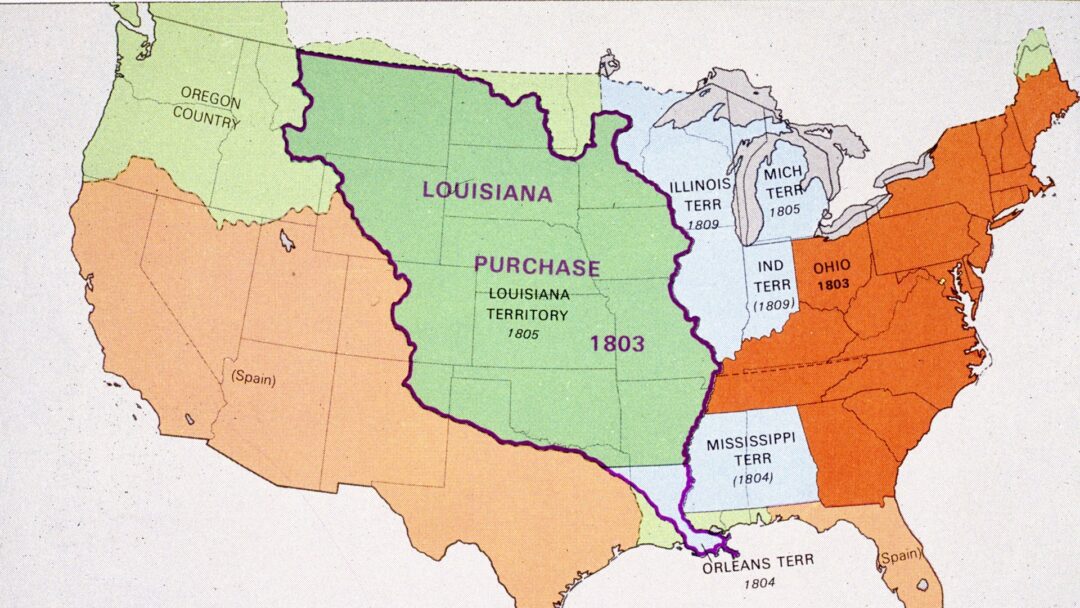
Property: All of Louisiana, Arkansas, Missouri, Iowa, Oklahoma, Kansas, Nebraska, North Dakota, and South Dakota, in addition to parts of Minnesota, New Mexico, Montana, Wyoming, and Colorado, for a total of 827,000 square miles
Purchase Price: $15 million
Buyers: President Thomas Jefferson, James Monroe, and Robert Livingston –– United States
Sellers: Napoleon Bonaparte ––France
After successfully conquering most of Europe, Napoleon Bonaparte set his sights on invading Britain. However, conquering nations wasn’t cheap, and Napoleon needed some quick cash before taking on the British. He decided to sell off the territory of Louisiana, which he had acquired from Spain in 1800. President Thomas Jefferson sent James Monroe and Robert Livingston to Paris with a $10 million budget for purchasing New Orleans and all or part of the Floridas. If this initial offer failed, Monroe and Livingston were instructed to try to buy just New Orleans or, at the very least, secure access to the Mississippi.
Initially, Jefferson offered $2,000,000 for New Orleans, which was rejected. Subsequently, Jefferson offered $10,000,000, and this offer was accepted. Then, because France needed money to fund its war with Great Britain, Napoleon offered to sell the entire Mississippi basin for $15 million ($11.25MM in cash and $3.75MM in debt forgiveness). Despite exceeding the initial budget, the opportunity was too good to pass up. Monroe and Livingston agreed to the deal on behalf of the United States, deciding it was better to ask for forgiveness rather than wait for permission.
Even though the Constitution did not have a provision to allow for the purchase, Jefferson knew that most of the country favored it, so he closed the deal in 1803. Some people say that this was not the Deal of the Century but rather the “Steal of the Century” since the Indians occupied that land and had no idea that it had been sold. This is why you should always use a reputable title company!
The Louisiana Purchase encompassed 827,000 square miles of land (approximately 512 million acres) west of the Mississippi River. This territory would become the states of Louisiana, Arkansas, Missouri, Iowa, Oklahoma, Kansas, Nebraska, North Dakota, and South Dakota, as well as parts of Minnesota, New Mexico, Montana, Wyoming, and Colorado. This deal doubled the United States’ size, eliminated a foreign power on the western flank, and secured control of the Mississippi.
1848: The Treaty of Guadalupe Hidalgo – 525,000 square miles for $15 million – Including California!
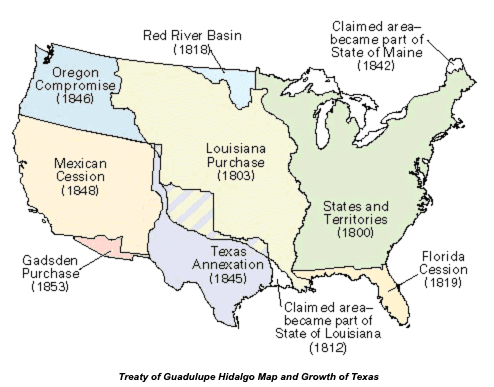
Property: All of California, Nevada, and Utah, along with parts of Wyoming, Colorado, Arizona, and New Mexico, for a total of 525,000 square miles
Purchase Price: $15 million
Buyers: Nicholas Trist, chief clerk of the State Department, President James K. Polk–– United States
Sellers: Don Bernardo Couto, Don Miguel Atristain, and Don Luis Gonzaga Cuevas ––Mexico
After two years of fighting, the defeat of the Mexican army, and the fall of Mexico City in 1847, Mexico’s government surrendered to the United States and began negotiations to end the war. Nicholas Trist, the chief clerk of the State Department under President Polk’s administration, met with a special commission representing the collapsed Mexican government led by Don Bernardo Couto, Don Miguel Atristain, and Don Luis Gonzaga Cuevas.
Signed on February 2, 1848, The Treaty of Guadalupe Hidalgo ended the Mexican-American War and increased the footprint of the United States by 525,000 square miles. Trist negotiated the purchase of all of California, Nevada, and Utah, in addition to parts of Wyoming, Colorado, Arizona, and New Mexico. Mexico also gave up all claims to Texas and recognized the Rio Grande River as America’s southern boundary.
The U.S. appointed commissioner Colonel Jon Weller and surveyor Andrew Grey, while Mexico appointed General Pedro Conde and Sr. Jose Illarregui to carry the treaty into effect. Together, these men surveyed and set the boundary between the United States and Mexico, mainly using piles of stones as their markers.
Knowing just how high California’s real estate prices can go, we can all agree that the United States hit a grand slam when California was acquired as part of the deal.
1854: The Gadsden Purchase – 29,670 square miles for $10 million
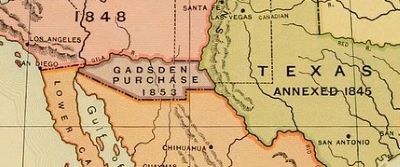
Property: The southern borders of Arizona and New Mexico for a total of 29,670 square miles
Purchase Price: $10 million
Buyers: President Franklin Pierce, James Gadsden, and New Mexico Governor William Lane–– United States
Sellers: President Antonio de Santa Anna––Mexico
Despite the formal end of the Mexican-American War in February 1848, America’s relationship with Mexico remained tense due to ongoing border disputes. This complicated U.S. efforts to find a southern route for a transcontinental railroad as the only viable routes passed through Mexican territory. As the missing piece of land, gaining ownership of the Mesilla Valley would allow the southern states to connect to the Pacific Coast by rail.
In 1853, Mexican officials evicted Americans from their property in the disputed Mesilla Valley. In response, New Mexico Governor William Lane declared the land part of the U.S. territory of New Mexico, leading Mexican President Antonio de Santa Anna to send troops into the valley. U.S. President Franklin Pierce sent James Gadsden to Mexico as an ambassador to defuse the situation. Gadsden met with Santa Anna to negotiate the purchase of the Mesilla Valley.
The Gadsden Purchase was finalized in 1854, and the United States paid Mexico $10 million for 29,670 square miles of land that would eventually become the southern borders of Arizona and New Mexico.
1867 The Alaska Purchase – 600,000 square miles for $7.2 million
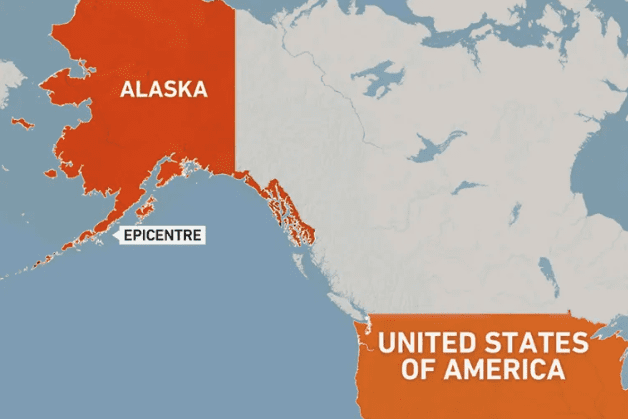
Property: 600,000 square miles
Purchase Price: $7.2 million
Buyers: Secretary of State William Henry Seward and Presidents James Buchanan, Abraham Lincoln, and Andrew Johnson––United States
Sellers: Russian Minister to the United States Edouard de Stoeckl, Tsar Aleksandr II, and Grand Duke Konstantin Nikolaevich––Russia
Selling Alaska to the United States was an idea Russian Emperor Alexander II had toyed with since the early 1850s. Russian leadership felt that the U.S. would eventually overrun the entire North American continent, so they might as well earn cash from the colony before it was taken from them. In 1859, Russia’s first offer to sell the territory of Alaska to the U.S. arrived, but the nation’s looming breakup stalled the deal. With their focus on the American Civil War (1861-65), The James Buchanan and Abraham Lincoln administrations weren’t in any position to respond positively to Russia’s offers.
After the Civil War, the Russian government once again offered to sell the territory of Alaska to the United States in 1866. Longtime supporter of the acquisition, U.S. Secretary of State William Henry Seward met with Russian Minister Edouard de Stoeckl to begin negotiations. In 1867, a deal was finally secured, and President Andrew Johnson oversaw the United States’ $7.2 million purchase of Alaska from Russia. For less than 2 cents/acre, the U.S. acquired nearly 600,000 square miles, ended Russia’s presence in North America, and secured access to the Pacific Northern Rim.
Despite these benefits, many disagreed with the purchase of Alaska and dubbed the deal “Seward’s Folly.” Thirty years later, we struck gold, and those skeptics changed their tune. From the start of the gold rush to today, over 50 million troy ounces of gold have been found in Alaska. Gold prices have varied over the years, but a troy ounce costs around $2,000 ($100 Billion.)
The Virgin Islands Purchase (1917) – $25 million
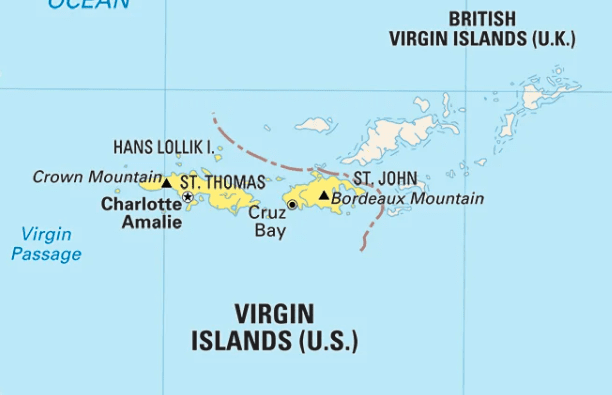
Property: The Caribbean islands of St. Thomas, St. John, and St. Croix
Purchase Price: $25 million
Buyers: Secretaries of State William Henry Seward, John Hay, and Robert Lansing, along with President Woodrow Wilson–– United States
Sellers: Danish Minister to the U.S. Constantin Brun, the Danish parliament under King Christian X of Denmark––Denmark
After the end of the Civil War in 1865, real estate negotiations began between the United States and Denmark over the Danish West Indies. While securing the Alaskan Purchase, Secretary of State William Henry Seward negotiated a treaty with Denmark to cede the islands to the U.S. in 1867, but the Senate rejected it. Negotiations started again in the 1890s but were stalled by the Spanish-American War in 1898. Talk about a deal killer!
With sights set on building the Panama Canal, the US again began negotiations with Denmark to purchase the islands in 1902. Secretary of State John Hay negotiated a treaty with Denmark. The Senate ratified the treaty in 1902, but the Danish parliament rejected it this time. Never count your commission until the money is in your bank account!
In 1915, the fear of Germany annexing Denmark and gaining control of the Danish West Indies motivated President Woodrow Wilson to make yet another try for the purchase. Secretary of State Robert Lansing met with Constantin Brun, the Danish Minister to the U.S. under King Christian X of Denmark, to begin negotiations. Unsure of the consequences for the predominantly black population of the islands, the unfortunate civil rights record of the U.S. caused Danish leaders to resist ceding the islands. So, the deal was still not done, but persistence paid off.
To push the deal forward, Lansing insinuated that if Denmark didn’t sell, the United States might seize the islands anyway to prevent Germany from getting to them. As a neutral party in World War I, Denmark was eager to stop U.S. military attacks and agreed to sell the Danish West Indies to the United States for $25 million. Denmark formally transferred governance on March 31, 1917, and St. Thomas, St. John, and St. Croix officially became the U.S. Virgin Islands.
Conclusion –
Each of these Nation-Building events/deals played an instrumental role in shaping the United States into what it is today. If there’s anything we should learn from our nation’s commercial real estate history, it’s that seizing the opportunity is how the best deals get done, and fearlessly following up can move a stalled deal across the finish line. Each deal was made because the sellers were motivated and, in some cases, intimidated. The US deal makers involved with these deals are probably the most successful brokers our country, let alone Sacramento, has ever seen. Granted, having a client like the United States of America is nice, but it still took the initiative, superior timing, entrepreneurial spirit, and, in some cases, intimidation, to make America the country it is today.
If you are looking for a great broker in the Sacramento Market, don’t hesitate to contact Bacon Commercial.

